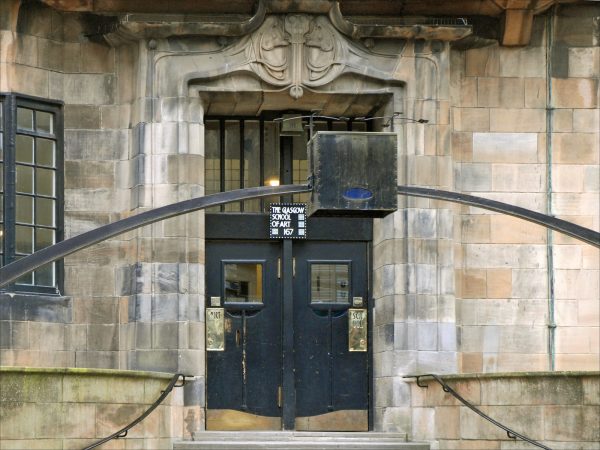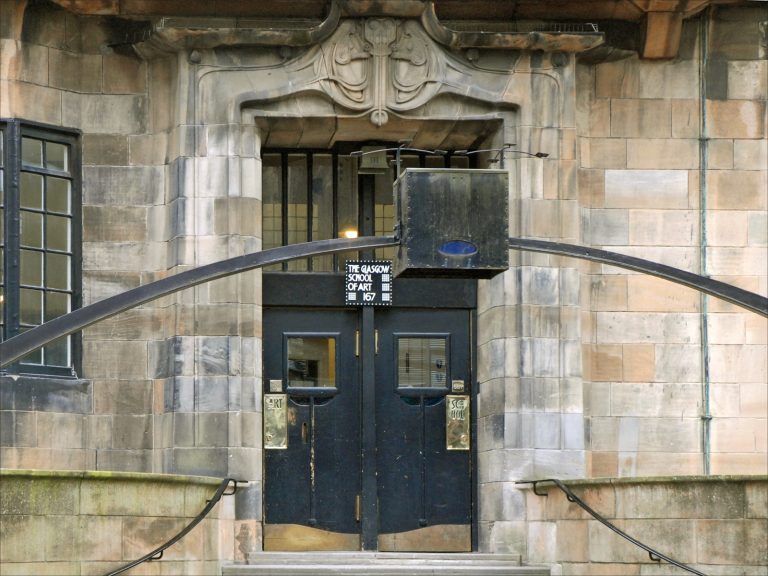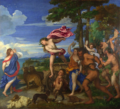When news filtered through on the evening of Friday 15th June that the building largely regarded as the architect Charles Rennie Mackintosh’s (1868-1928) masterwork – and which had already been severely damaged by fire in May 2014 – was once more ablaze much more seriously than before, the mourning for what was feared would be its total loss reverberated far beyond Glasgow.
There were very understandable reasons for that. After all, for well over a century, when visitors to the city would enquire to locals as to the whereabouts of the ‘Glasgow School of Art’, they would be invariably pointed in the direction of what came to be known by its users as ‘The Mack’, rather than any of the other structures to have been dotted around the Garnethill campus down the years.
The Mackintosh Building, to give it its more formal moniker, is not the same entity as the institution that owns and operates it; yet in the public imagination, the two have been tightly intertwined ever since construction came to a triumphant completion in December 1909.
But as arguments continue to rage as to the fate of the burned-out and partly demolished structure that has practically come to define the Glasgow School of Art, it is also worth reflecting on the seemingly symbiotic relationship of the now-stricken bricks and mortar with an early social history that was in many ways as startlingly progressive, daring and convention-defying as the edifice itself.
Cultivating the ‘art instinct’ in every student
The circumstances giving rise to the construction of what would come to be seen as an iconic and pioneering representative of early modernist architecture may seem to have been mundane enough. Prior to the spellbinding new premises becoming available on Renfrew Street, the School had been based on the first and second floors and an attic storey of the city’s ‘Corporation Buildings’ – now commonly known as the McLellan Galleries.

However, by the time Francis Henry Newbery (1855-1946) took up his post as the School’s director in 1885, these poorly ventilated gas-lit rooms with south-facing windows were already seen as inadequate for a modern school of art. This prompted a campaign for the construction of new, purpose-built premises, with Newbery playing a central role, not only helping to commission the then largely unknown Mackintosh as architect, but also being actively involved in its design himself.
The first stage of the new building became available for the School’s use in 1899, setting up the institution nicely to lead what would prove a transformative century in arts education. The significance of Newbery’s own influence should not be doubted; the Devon-born son of a shoemaker firmly believed in the notion that everyone was a potential artist, pointing to the example of children scribbling, making mud pies and dressing up as evidence of a common ‘art instinct’.
However, ‘Fra’ Newbery – as he was universally known – had little time for the myth of the ‘undeveloped genius’. He felt it necessary to ‘educe’ – in other words, draw out – one’s innate propensity to make art, which he believed was made possible by placing the owner of such an ‘instinct’ in a rich environment that surrounded them with knowledgeable and sympathetic guides. Nor could the ‘art instinct’ be educed by just anyone, Fra believed, but by those who had discovered their own ‘artistic individuality’, and therefore truly deserved to be described as ‘artists’.
A focal point for bold new approaches to artistic education
Borrowing the aphorism of one of his former tutors at London’s National Art Training School (now the Royal College of Art), Edward Poynter (1836-1919), that “example is always better than precept”, Fra Newbery set about drawing up a curriculum for the Glasgow School of Art that would befit the new century, embodying not only his own demonstration-led art teaching philosophy, but also an openness to contemporary practice across Europe.
Another key plank of Fra Newbery’s progressive attitude to artistic training was his refusal to make any distinction between men and women as potential artists. While a perpetual historical barrier to women’s progress as artists was a general lack of availability of nude life classes for them, it appears that female students at Glasgow were working from the nude from at least 1887, with their numbers subsequently increasing each year.
Women had also long been barred from such areas as architecture, to which Glasgow began admitting female students in 1904, as well as sculpture and furniture design, which similarly saw significant contributions from women within the School at around this time. By the standards of the period’s art schools, Glasgow also had an unusually high proportion of female staff, accounting for 12 of a total workforce of 39 in 1910.
Newbery even harboured ambitions during his tenure for the School to be recognised as a ‘university for the arts’, as discussions began with the University of Glasgow about awarding degrees in art. Although this did not come to pass at the time, the two institutions did collaborate in a manner over the first two decades of the century that provided the Diploma course a much-improved academic grounding on what had been provided under the old regime.
Only in 1992, in fact – some 45 years after Newbery’s death – did the University of Glasgow begin validating the School’s undergraduate and postgraduate programmes, as it continues to do to this day.
The end of the school’s early flowering
Sadly, Germany’s invasion of Belgium to precipitate the commencement of the Great War in August 1914 served to bring to a stuttering halt the early Mackintosh-era School’s momentum – and with it, the lives of many of those to have taught and studied in its environs. As staff and students left to join the armed forces, student numbers plummeted from 1,357 in the 1913/14 session to 585 in 1916/17. Four-hundred staff and students had enlisted by this time, with 34 of them – including the Professor of Architecture, Eugene Bourdon (1870-1916) – dying in conflict.
With projects drying up in Glasgow, Mackintosh left for the south early in the war, and while Newbery initially held on, his dismay was clear to see in a letter to a friend in October 1916, in which he declared: “Only force of will enables one to carry on Art or Art education. The brightest colours that Art can assume at the present time, not only fail to attract attention but like a gaily dressed woman at a funeral, mankind wonders that she shows herself at all!”
Nonetheless, two severe mental collapses – in October 1914 and April 1917, the former attributed by his wife Jessie to exhaustion and the effects of the war – effectively hastened the end to Newbery’s career. By the time of his resignation in May 1918, he had overseen a true flowering of the School over 33 years, from one of national to truly international pre-eminence among art training institutions.
One wonders at how his, and so many others’, hearts would have broken if the pioneering figures of the fledgling years of the Mackintosh-era School had been able to see the tragic fate of the original ‘Mack’, and what their own thoughts might have been on the most appropriate path for the future?
This article largely uses as the basis for its research the Ray McKenzie-edited book, The Flower and the Green Leaf: Glasgow School of Art in the time of Charles Rennie Mackintosh, which was first published in 2009 and is highly recommended for more in-depth reading.







